![]()

Circuit Examples
|
Which circuit has the smallest resistance?
|
|
Ranking Rank the total resistance from smallest to largest
|
Name this Circuit
Show Me The
Physics
YouTube Channel
School blocks YouTube? Use file below.
| ConstructingParallelCircuits
Show Me The Physics YouTube Channel
Ex 6) Series Circuit
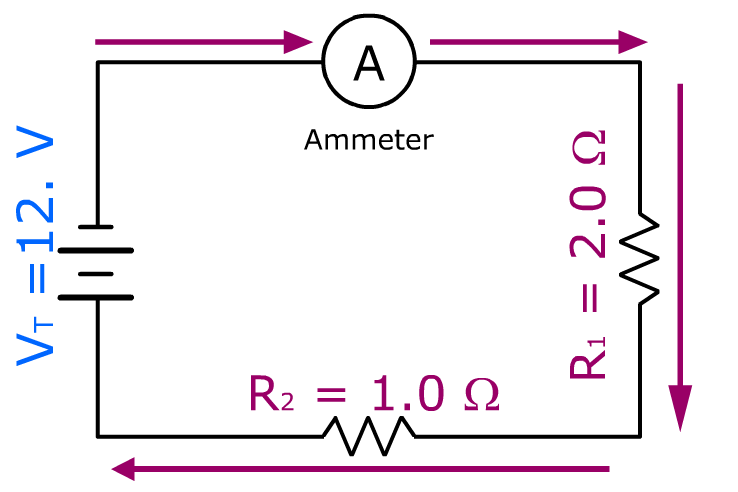
a) Find the 'equivalent resistance'
RT = R1 + R2
= 2.0 Ω + 1.0 Ω
= 3.0 ohms
b) Find the current (IT) going through this circuit
VT = ITRT
12. Volt = IT(3.0 ohms)
IT = 4.0 amps
c) Find potential drop across R1 & R2
V = IR
V1=4.0 amps(2.0 ohms)
= 8.0 Volts
V2 =4.0 amps(1.0 ohms)
= 4.0 Volts
Ex 7)
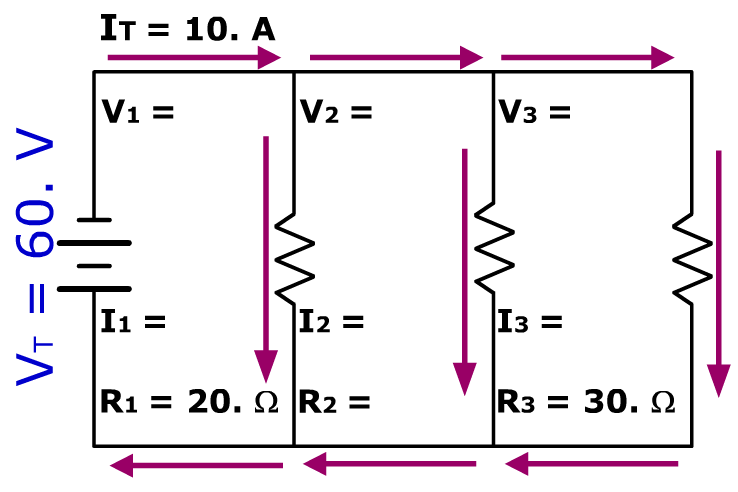
a) Find combined resistance (RT)
VT = IT RT
60. volts = (10 amps)RT
= 6.0 ohms
b) Find the current in R1
V1 = I1R1
60. Volts = I120. ohms
I1 = 3.0 amps
c) Find I3
V3 = VT = 60. volts
Use Ohm's Law
V3 = I3R3
60. volts = I330. ohms
I3 = 2.0 amps
d) Find R2
e) Find value of the second resistor
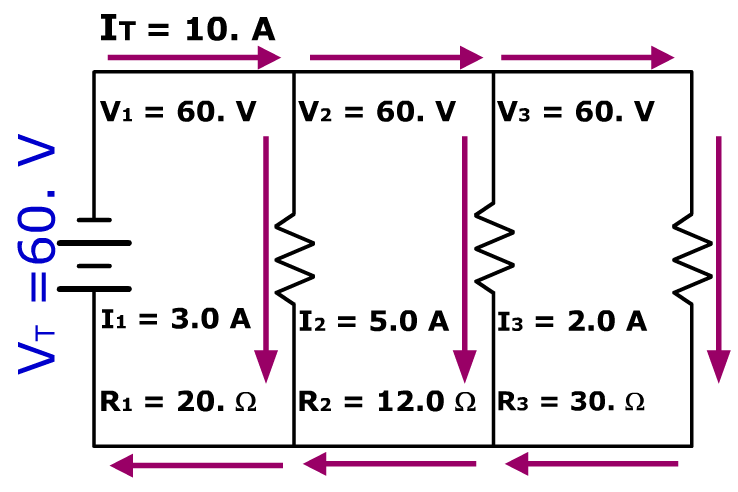
|
V = I R
Potential difference (V)
In parallel, V are always equal
|
Ex 8)
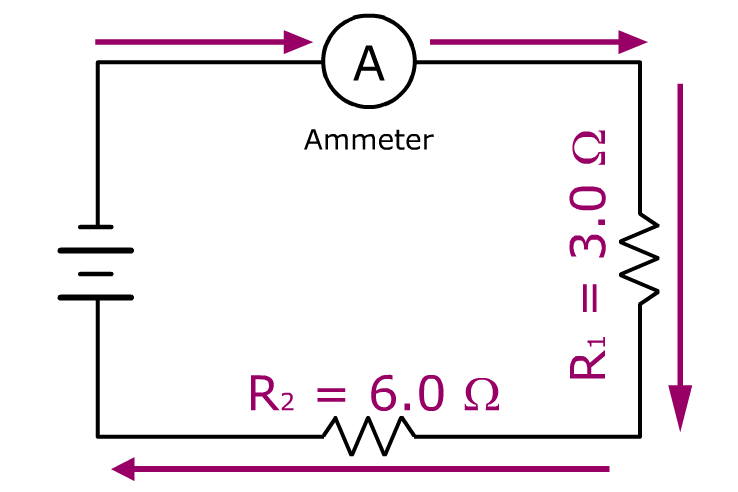
If the voltage drop across the 3 ohms resistor is 4.0 volts then the voltage drop across the 6.0 ohm resistor is
3.0 ohms : 4.0 volts
6.0 ohms : x
x = 8.0 volts
a) Find the total voltage in this series circuit
VT = V1 + V2
VT = 8.0 V + 4.0 V
= 12 V
b) Find combined resistance in this circuit
RT = 6.0 ohms + 3.0 ohms
RT = 9.0 ohms
c) Total current in this circuit?
VT = ITRT
12 V = IT(9.0 ohms)
IT = 1.3 Amps
Ex 9)
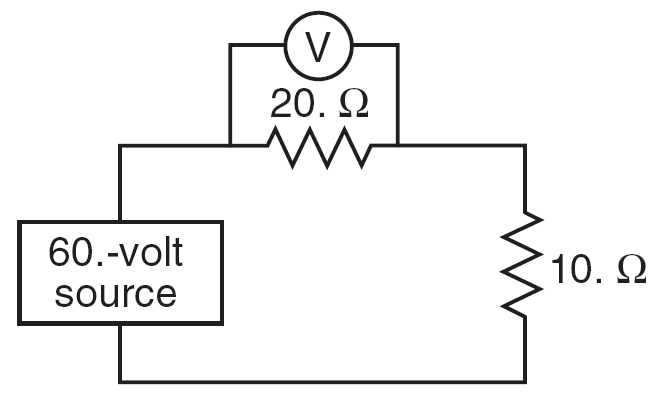
a) Compare the current through each resistor
Same (Series Circuit)
IT = I1 = I2 = ...
b) Compare the voltage drops in this circuit?

20. ohm resistor has twice the potential difference (voltage)
c) Current in this circuit?

VT = ITRT
60. V = IT(30. ohms)
IT = 2.0 Amps
c) Potential difference in 20. ohm resistor?

V = IR
= 2.0 amps(20. ohms)
= 40. V
Ex 10) Find R2

V = IR
First Find RT
8 V = 1 Amp(RT)
RT = 8 ohms
Find R2

RT = R1 + R2
Since
RT = 8 ohms
R = 6 ohms
AP Circuits
EMF - max. voltage of source
- internal resistance causes actual V to be lower
Complex Circuits

Ex) Find the potential difference between X and Y
Convert parallel R to a single R
1/RT = 1/3 + 1/6
1/RT = 3/6
RT = 2 ohms

Series Circuit 4 ohms,
2 ohms, 6 V source
Need V across 2 ohm R
V = IR
VT = ITRT
6 V = IT6 ohms
IT = 1 amp

V = 2 V
Ex 2)
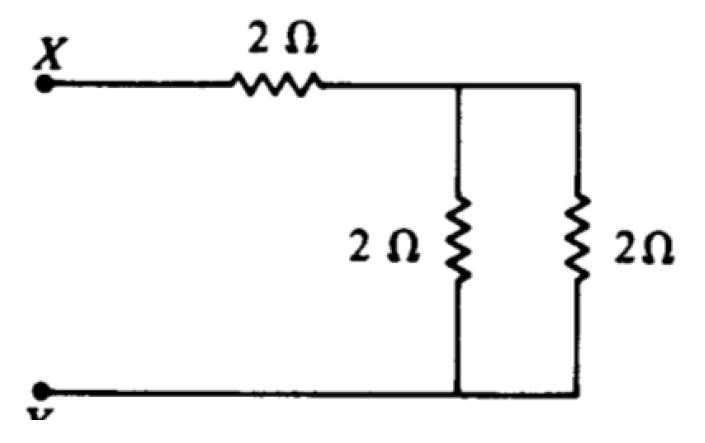
Find equivalent R between X and Y
1/RT = 1/3 + 1/6
RT = 2 ohms
RT = 3 ohms
Ex 3)

Find total current
(A) 0.8 mA (B) 1.0 mA
(C) 2.0 mA (D) 3.0 mA (E) 6.0 mA
Reduce parallel R to single R
1/RT=1/2000+1/6000
1/RT=3/6000+1/6000
RT = 1500 ohms

V = IR
12 V = I[4000 ohms]
(A) 0.8 mA (B) 1.0 mA
(C) 2.0 mA (D) 3.0 mA (E) 6.0 mA
![]()
![]()

Enrichment
ŠTony Mangiacapre.,
- All Rights Reserved [Home]
Established 1995
Use any
material on this site (w/ attribution)
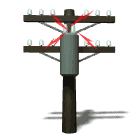
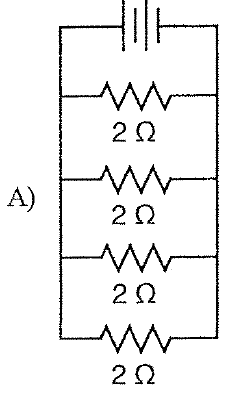
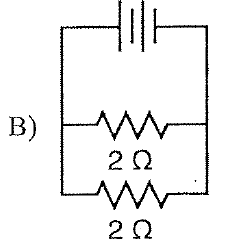
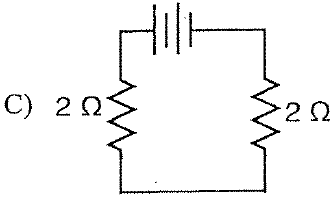
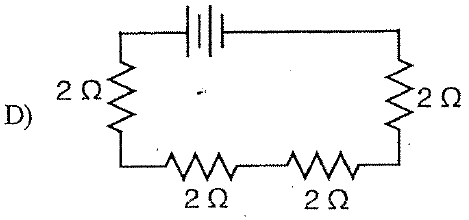
 Task
Task